Among the extruded aluminum profiles, T-slot and V-slot aluminum profiles are the most common. T-slot profiles have a "T"-shaped groove on each side, while V-slot profiles have beveled edges.
Although the differences are very small, these differences will directly affect the application of the profile. In this detailed comparison, we'll take a closer look at the unique features and benefits of V-slot and T-slot aluminum profiles to help you decide which is best for your specific needs.
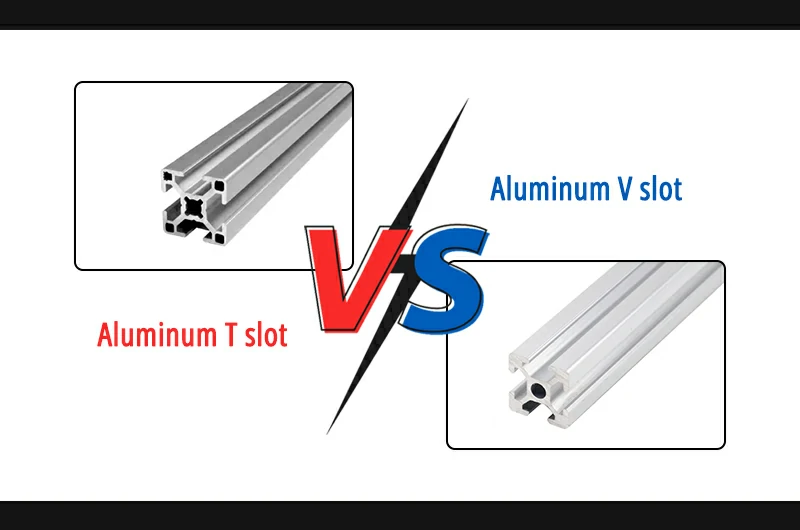
Definition of T slot and V slot
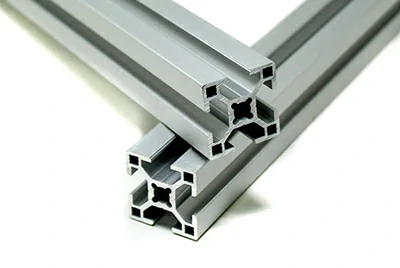 Aluminum T slot
Aluminum T slot- T-slot aluminum profiles have a T-shaped cross-section, with the slot extending along the entire length of the profile. Designed to accommodate various types of T-slot connectors and accessories, the slot can be easily inserted and adjusted to create custom constructions. T-slot extrusions are ideal for building structures that require high precision and modularity, such as industrial machinery, robotics, and custom workstations.
 Aluminum V slot
Aluminum V slot- V-slot is a high-quality extruded aluminum block with extremely smooth linear V-slot rails on all 4 sides. They are precise, easy to use and ideal for building structures that require precise linear movement and positioning as they provide a smooth and stable platform for moving parts. Mostly used in 3D printers, CNC machine tools and other types of equipment.
Difference in strength and stiffness
T-slot profiles provide good overall strength and rigidity. While they may not perform as well in a single direction as V-slot profiles, their versatility makes them suitable for a variety of applications. The open top design allows easy access to grooves, making it easier to connect components and accessories while maintaining structural integrity.
V-slot profiles tend to provide greater rigidity in the direction of linear motion. This design element imparts stability and precision to the linear motion system, making it suitable for applications where alignment and precision are critical.
Modular design
T-slot profiles are designed with modularity. Thanks to its open-groove architecture, customers can quickly adjust and reconfigure their setup without having to make complicated changes. This feature makes T-slot profiles ideal for projects that require adaptability and customization, as they can be quickly customized to changing needs.
V-slots are less modular than T-slot profiles. Their designs are inherently focused on linear motion applications and may not require frequent reconfiguration or adaptability. While V-slot configurations are still customizable, they are typically used in applications where less versatility is required.
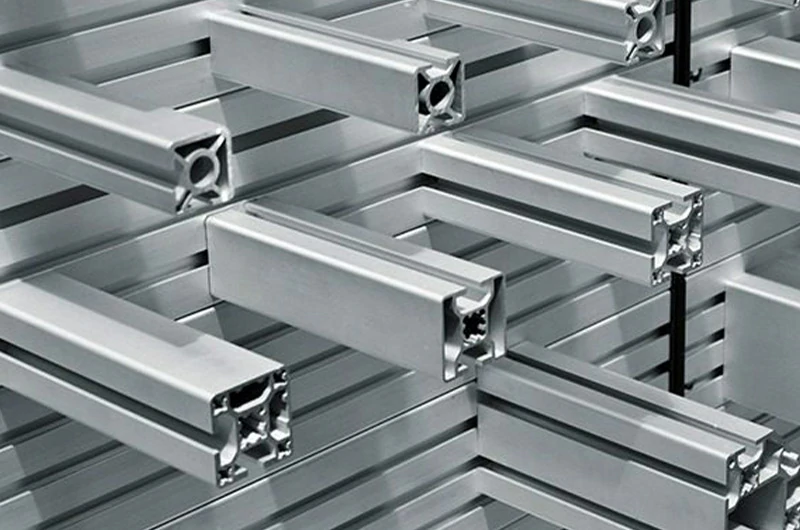
Differences in accessory selection
T-slot profiles are ideal for joining purposes. Its open design allows T-nuts and other fasteners to be easily inserted and slid into the grooves. This adaptability enables users to secure objects virtually anywhere on the extrusion, making it ideal for a variety of applications.
Although V-slot profiles can be used to connect components, they are less flexible than T-slot profiles. Since it is primarily used to guide V-wheels, the choice of fasteners and components that can be used is limited.
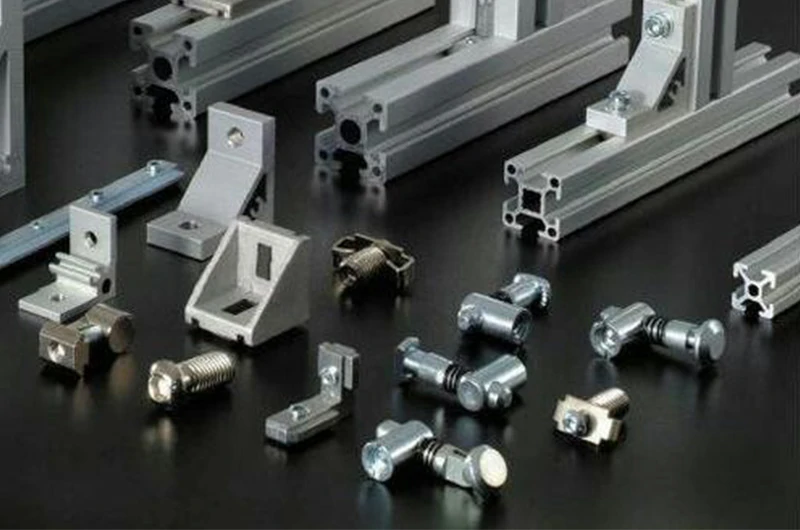
Difference in design and construction
T-slot extrusions feature T-slots for greater flexibility and adjustability. T-slots allow for easy attachment and adjustment of a variety of connectors and accessories.
V-slot extrusions have V-shaped grooves. The compatibility of V-slot extrusions is more limited because they are specifically designed for use with V-slot wheels and linear motion systems.
Cost difference
The cost of V-slot and T-slot extrusions can vary depending on factors such as wall thickness, type of alloy used, and the quality of the manufacturing process. Generally speaking, T-slot extrusions tend to be slightly more expensive than V-slot extrusions because they are more versatile and can be used in a wider range of applications.
Differences in application areas
T-slot profiles are more versatile and suitable for a variety of applications. They are ideal for situations where components, panels or accessories need to be attached to various points on the extrusion. Due to their versatility, they are ideal for workbenches, enclosures, automation systems and projects that require a modular and easily adaptable frame.
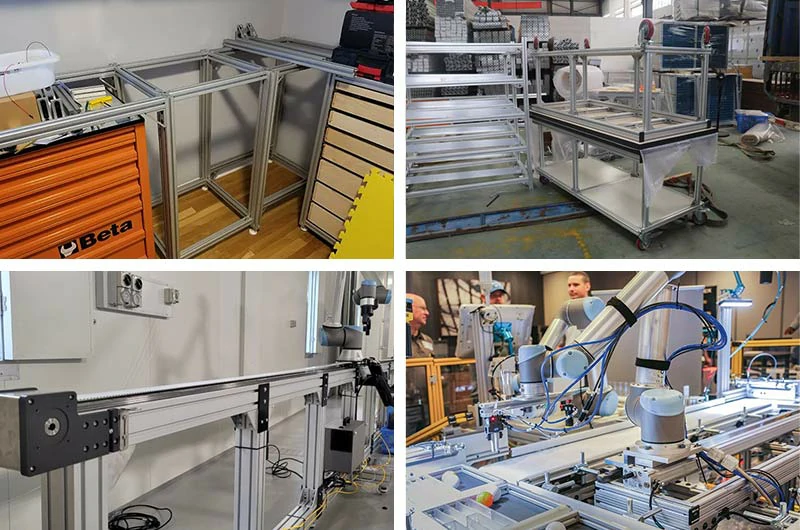
The design of the V-slot profile places particular emphasis on linear movement. Their V-shaped grooves act as precision guides for the V-wheels, ensuring objects move smoothly and accurately along the length of the extrusion. This makes them ideal for CNC machines, 3D printers, and any project that requires precise linear motion.
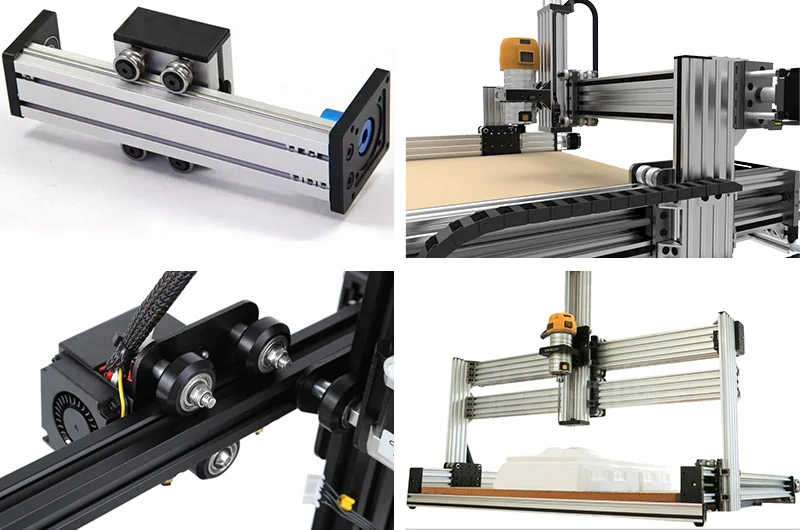
Summary
V-slot profiles are ideal for those seeking precision and linear motion applications. If your project requires flexibility, modularity and ease of assembly, T-slot profiles will be perfect for you.
MASTAR invites you to explore our product range and contact us for comprehensive product insights and support.
Tips: FAQs related to the purchase of T slot and V slot
1. Which profile is easier to assemble, T-slot or V-slot?
T-channel profiles are generally easier to assemble due to their versatile design.
2. Are V-slot profiles more expensive than T-slot profiles?
Yes, V-slot profiles can be more expensive due to their special features.
3. Can T-slot profiles provide the same precise movement as V-slot profiles?
In some applications, T-slot profiles may lack the accuracy of V-slot profiles.
4. In which industries are T-slot profiles mainly used?
T-slot profiles are widely used in manufacturing, automation and robotics.
5. Which profile, T-shaped groove or V-shaped groove, is more suitable for 3D printers?
V-slot profiles are often favored in 3D printers due to their precise and smooth movement.

